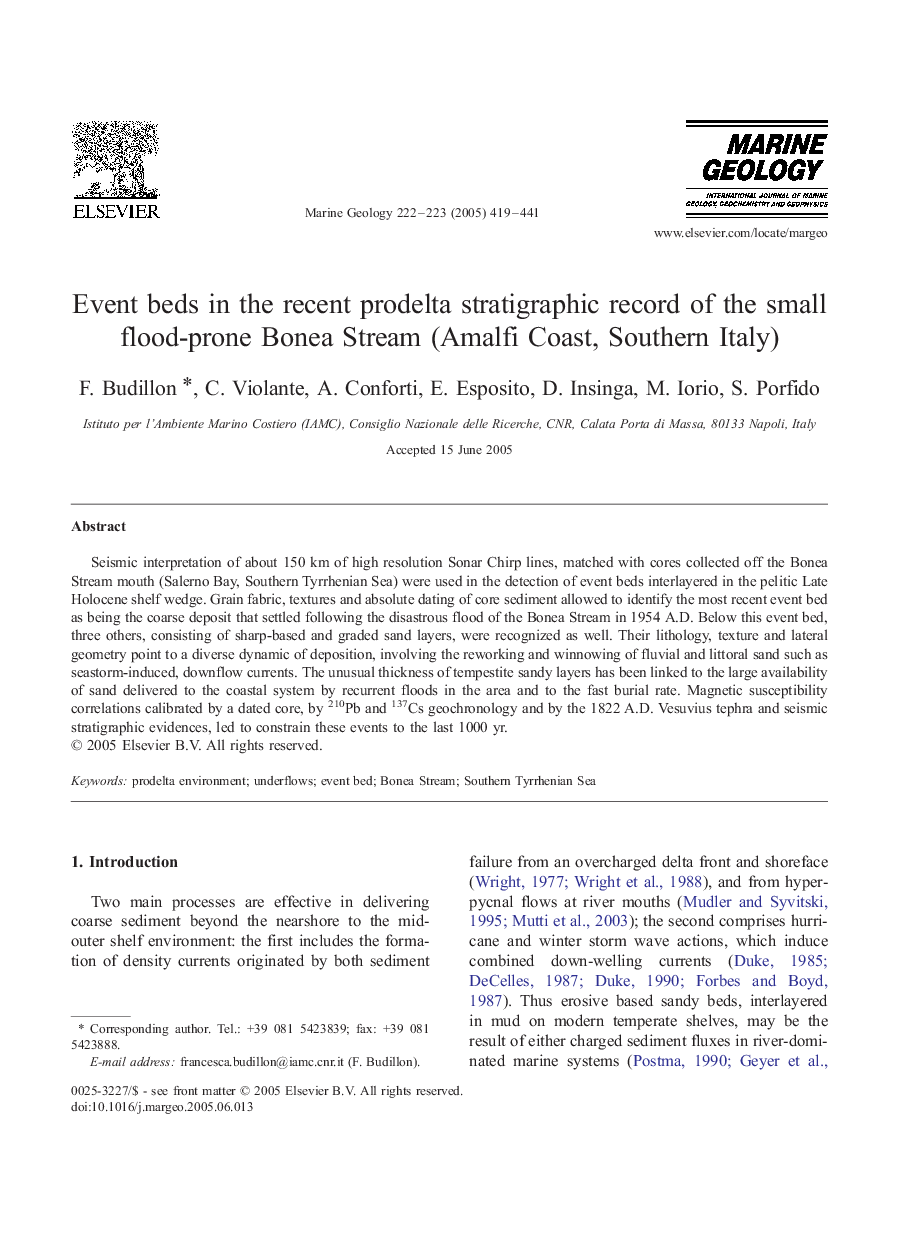| Article ID | Journal | Published Year | Pages | File Type |
|---|---|---|---|---|
| 9532474 | Marine Geology | 2005 | 23 Pages |
Abstract
Seismic interpretation of about 150 km of high resolution Sonar Chirp lines, matched with cores collected off the Bonea Stream mouth (Salerno Bay, Southern Tyrrhenian Sea) were used in the detection of event beds interlayered in the pelitic Late Holocene shelf wedge. Grain fabric, textures and absolute dating of core sediment allowed to identify the most recent event bed as being the coarse deposit that settled following the disastrous flood of the Bonea Stream in 1954 A.D. Below this event bed, three others, consisting of sharp-based and graded sand layers, were recognized as well. Their lithology, texture and lateral geometry point to a diverse dynamic of deposition, involving the reworking and winnowing of fluvial and littoral sand such as seastorm-induced, downflow currents. The unusual thickness of tempestite sandy layers has been linked to the large availability of sand delivered to the coastal system by recurrent floods in the area and to the fast burial rate. Magnetic susceptibility correlations calibrated by a dated core, by 210Pb and 137Cs geochronology and by the 1822 A.D. Vesuvius tephra and seismic stratigraphic evidences, led to constrain these events to the last 1000 yr.
Keywords
Related Topics
Physical Sciences and Engineering
Earth and Planetary Sciences
Geochemistry and Petrology
Authors
F. Budillon, C. Violante, A. Conforti, E. Esposito, D. Insinga, M. Iorio, S. Porfido,
